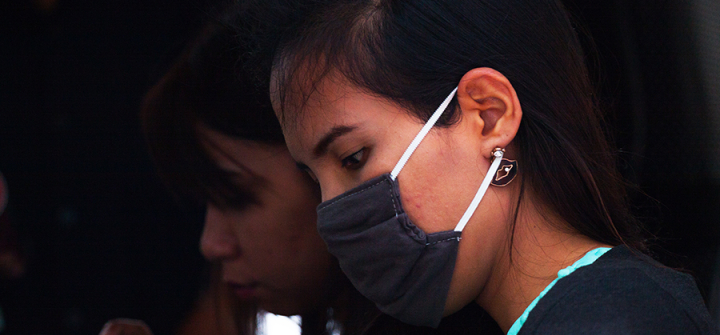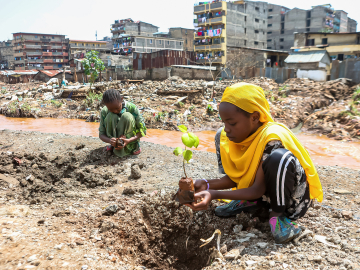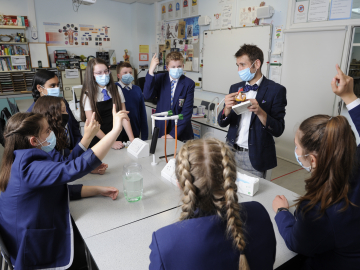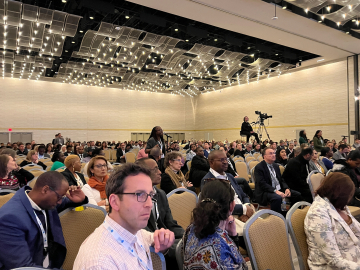Climate Change and Mental Health: Q&A with Lise Van Susteren, MD
Psychiatrist Lise Van Susteren specializes in the psychological effects of climate change—and believes that mental health professionals—by the nature of their training—are uniquely positioned to reach people and bring about change. Van Susteren is part of the Climate Psychology Alliance, an international group working to inform professionals and the public of the profound impacts of climate disruption on mental health and well-being, meeting this week in the UK. She also serves on the Advisory Board of the Center for Health and the Global Environment at the Harvard T.H. Chan School of Public Health, and the Earth Day Network National Wildlife Federation board. GHN’s Dayna Kerecman Myers reached out to Van Susteren after she presented about the effect of climate change on mental health at last month’s Climate & Health Meeting in Atlanta, Georgia.
Part I: The Psychology of Change
What inspired you to combine your work as a psychiatrist with climate change advocacy, and how are mental health professionals uniquely equipped for the challenge?
I ran for the US Senate in Maryland, and during the campaign, confronted by environmental issues related to state of the Chesapeake Bay, for example, I became concerned about global climate change. I joined the board of the Chesapeake Climate Action Network, and ended up being trained by Al Gore at the Climate Project to educate the public about global warming. In the last 10 years, I’ve focused increasingly on climate change, because I realized that if we don’t fix what we’re doing wrong on that front, all the rest isn’t going to count in the end. And working on climate and being a psychiatrist is a natural fit. Psychiatrists focus on behaviors that are harmful to people, and we break down the resistance and the denial to looking at those behaviors. We need to take the same approach with climate.
You mentioned that you are already seeing pre-traumatic stress disorder in clients. Can you describe that in more detail?
That is a term that I coined; there are no studies yet but I can tell you that many people already suffer from this disorder. I call it “pre,” but there’s nothing “pre” about it. When we look around the world, we see people starved, some drowned trying to cross the Mediterranean, homes flooded or burned down in wildfires, etc. But much of traumatic stress disorder is how we imagine things are going to be … we have in our minds images of the future that reflect what scientists are telling us; images of people and animals suffering because of dumb choices we’re making today. I would say it’s an entirely legitimate condition—accompanied by a non-stop, gnawing sense that more needs to be done.
A few years ago, during Australia’s drought, a teenager was hospitalized in Melbourne for refusing to drink water. He became delusional, fearing that if he drank any water it would contribute to additional deaths of people and animals across Australia. His treating doctor told me that he has a clinic full of children with climate anxiety, beseeching their parents to do more. Neurologically, young people are much more open to change. Older people tend to be more rigid—the time to reach them is when they’re young. Kids also realize that they’re the ones who will be left picking up the pieces. I’m currently involved with a landmark legal case with Our Children’s Trust, known as Juliana vs. the US. 21 youth are suing the federal government for inaction on climate change on behalf of the country’s children, asserting that, through the government’s actions in causing climate change, it has violated the youngest generation’s constitutional rights to life, liberty, and property, and failed to protect essential public trust resources. An initial motion to dismiss was rejected, and the case is now going to trial; I’ll be interviewing the young people to evaluate them for psychological harm.
At the Climate & Health Meeting in Atlanta last month, you said that it is becoming clear that destructive inaction on climate will one day be experienced as child abuse. What could be done to help stigmatize climate inaction now? Is stigmatizing inaction a much more difficult task than stigmatizing an act—like smoking?
Social norms are such a powerful way to bring about cultural change—and the great thing is that sometimes you don’t even have to address the specific issue involved. For example, a campaign in Maryland a couple of years ago focused on people with SUVs—putting a “ticket” with a message designed to point out, nicely, that their choices were harmful to themselves and others. Or in the UK, you pay a city tax if you drive your car into central London during the day, to fight air pollution. Other social norms related to pollution and climate change include positive reinforcement with HOV lanes for hybrid cars, tax breaks for plug-in cars, etc.
Where do you stand on the debate, which has bubbled up amid planning for the March for Science, over whether scientists and doctors should take a stand on climate change or politics?
The louder we speak, and the more of us speaking, the more effective we’ll be. The physicist Max Planck said that science progresses one funeral at a time, because as we get older we are less open to new ideas. But we need to convey the unflagging relentless message that we are in trouble. What is problematic is if you say we’re in trouble, and then quiet down—because that becomes the new normal; the silence suggests we’re okay. Scientists are a critical voice. It is our voices calling out, together, over and over, that brings about change that comes faster than one funeral at a time.
Part II of this Q&A will be published on March 17, 2017.
This interview has been edited lightly for space and clarity.
Join the thousands of subscribers who rely on Global Health NOW summaries and exclusive articles for the latest public health news. Sign up for our free weekday enewsletter, and please share the link with friends and colleagues: Subscribe to GHN
Young Thai girl with mobile and surgical mask. Michael Luhrenberg/iStock





